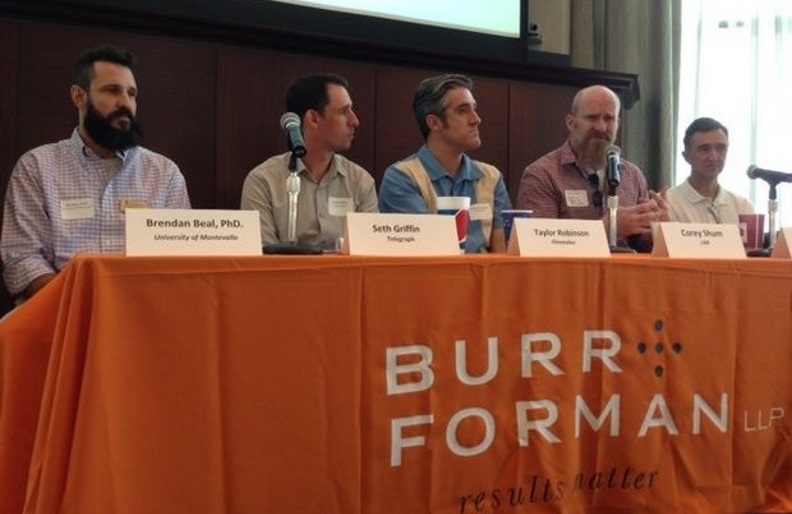When most people think of virtual reality, they think of video games. But don’t put the technology in a box: virtual reality is both a lot more accessible and useful in a lot more ways.
Sidewalk Film Festival partnered with commercial application sellers to a TechBirmingham for a TechTuesday event Tuesday as part of Innovation Week. Panelists ranged from traditional filmmakers to a professor of social work, all taking about unexpected uses for virtual reality.
Here are five unusual applications for virtual reality from the panel.
-
- Marketing: Seth Griffin, Creative Director for Telegraph Creative, told a story of a client he once had: a hotel in south Florida. His client had a great close rate when potential customers visited the site – but it was hard to get those people to visit the site itself. So the hotel would bring traditional marketing materials to travel and trade shows, which would include transporting these massive marketing materials for a close rate that wasn’t anywhere close to onsite visits. Griffin created virtual reality content for that hotel, which solved two problems: it was closer to visiting the site itself, and it made traveling much easier by eliminating the need to carry those massive marketing materials. Griffin calls virtual reality the closest we’ve yet gotten to teleportation.
- Testing: Brendan Beal, an assistant professor of social work at the University of Montevallo, used to be a child abuse investigator. No one was ever happy that he knocked on their doors. And it’s hard to test his students on how they’d react to that on a final exam. So he’s in the process of developing virtual reality exams: His group social work class, he hopes to see how students would react in a group social work setting and how they’d react to different factors without actually hurting people in a way that’s possible in an internship.
- Charity: About a half a dozen times, Telegraph Creative has brought its products to Children’s of Alabama. Not only are these children physically stuck in a hospital for a time, many have physical limitations that would prevent them from seeing many parts of the world. Griffin said the pseudo-teleportation abilities of virtual reality not only allow these children a form of opportunities they wouldn’t normally have but can actually distract them during painful treatments.
- Field Instruction: Birmingham’s Gary York has made a company in virtual reality. He told the story of his father, who bought a stereo from Best Buy but couldn’t figure out how to get it wired. His father called the store, they sent out a person from Geek Squad, who also couldn’t figure it out, and his father returned the stereo for a refund. This was a terrible user experience for both his father and Best Buy. But someone, he said, somewhere, knows how to set up that stereo. That’s where Help Lightning comes in: the company uses a simple smartphone app that allows help professionals from anywhere in the world to use forms of virtual reality to see exactly what they’re doing, and how they can help them.
- Journalism: Virtual reality has been called “The Empathy Machine.” Major publications like National Geographic and the New York Times have begun investing in virtual reality content. “It’s one thing to see a picture of a war torn country or the destruction of a tsunami, but it’s another thing to be there, standing on the streets,” Griffin said.
Alabama Media Group is a sponsor of Innovation Week.
This article was originally published by AL.com

